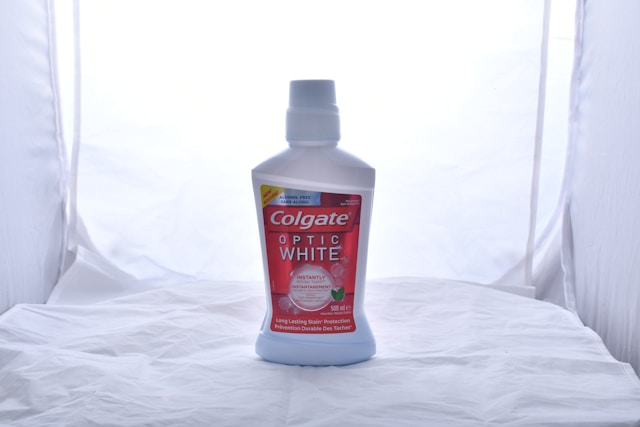Colgate, a leading oral care brand, has built its empire over two centuries. Its marketing strategy is a testament to the power of consistency, innovation, and understanding consumer behavior. For marketing professionals, dissecting Colgate’s approach offers invaluable insights into creating a long-lasting and impactful brand presence.
This post explores Colgate’s marketing strategy, highlighting successful campaigns and key principles that have guided its journey.
Building a Legacy: Colgate’s Brand Consistency
Consistency is at the heart of Colgate’s marketing success. Since its inception in 1806, Colgate has maintained a clear and focused brand identity. The company’s dedication to oral health is evident in its product offerings, messaging, and market positioning. This unwavering commitment has established Colgate as a trustworthy and reliable brand in the minds of consumers worldwide.
Example: The “Smile” Campaigns
Colgate’s recurring “Smile” theme encapsulates its brand promise. Campaigns like “Keep America Smiling” and “Smile On” have reinforced the message that Colgate products contribute to a brighter, healthier smile. By consistently associating its products with positive emotions and health benefits, Colgate has cemented its place in the oral care market.

Understanding and Segmenting the Market
Colgate’s deep understanding of its market and audience segmentation has been crucial to its success. The brand caters to diverse demographics, tailoring its products and messaging to meet specific needs. From children’s toothpaste to specialized products for sensitive teeth, Colgate ensures that it addresses the unique requirements of its consumers.
Example: Colgate Kids
Recognizing that children have different oral care needs and preferences, Colgate developed the Colgate Kids line. This product range features fun packaging and flavors designed to appeal to children, making brushing an enjoyable experience. Marketing campaigns for Colgate Kids often include partnerships with popular children’s characters and engaging digital content, fostering early brand loyalty.
Innovation in Product Development
Innovation is a cornerstone of Colgate’s strategy. The brand continually invests in research and development to introduce new products that meet evolving consumer needs. This commitment to innovation not only keeps the product line fresh but also reinforces Colgate’s position as a leader in oral care.
Example: Colgate Total
Colgate Total, introduced in 1997, revolutionized the toothpaste market. Promising comprehensive oral care, it was the first toothpaste clinically proven to provide 12-hour protection against plaque and gingivitis. The launch was supported by extensive marketing efforts, including TV commercials, print ads, and in-store promotions, highlighting the product’s unique benefits. Colgate Total’s success demonstrated the brand’s ability to innovate and set new industry standards.
Leveraging Digital Marketing
In the digital age, Colgate has adeptly adapted its marketing strategy to include a robust online presence. From social media campaigns to influencer partnerships, Colgate utilizes digital platforms to engage with consumers, share educational content, and promote its products.
Example: #ColgateSmile Campaign
The #ColgateSmile campaign harnessed the power of social media to encourage users to share their smiles online. By integrating user-generated content, the campaign not only increased engagement but also fostered a sense of community among Colgate users. The campaign’s success was amplified by collaborations with influencers who shared their own Colgate Smile stories, reaching a broader audience and enhancing brand visibility.

Emphasizing Corporate Social Responsibility (CSR)
Colgate’s commitment to CSR initiatives plays a significant role in its marketing strategy. The brand actively participates in programs that promote oral health education, environmental sustainability, and community support. These initiatives not only enhance Colgate’s corporate image but also resonate with socially conscious consumers.
Example: Bright Smiles, Bright Futures
The “Bright Smiles, Bright Futures” program is one of Colgate’s most notable CSR initiatives. Launched in 1991, it aims to provide oral health education to children worldwide. The program includes educational materials, free dental check-ups, and product samples, reaching millions of children each year. This initiative not only addresses a critical health issue but also builds positive brand associations among participants and their families.
Strategic Partnerships and Sponsorships
Colgate has effectively utilized strategic partnerships and sponsorships to enhance its brand visibility and credibility. Collaborating with professional organizations, sports teams, and events, Colgate has been able to reach a wider audience and reinforce its commitment to oral health.
Example: Sponsorship of the World Cup
Colgate’s sponsorship of the FIFA World Cup exemplifies its strategic use of partnerships to amplify brand exposure. The association with a globally recognized event allowed Colgate to connect with millions of viewers, aligning the brand with the excitement and passion of the tournament. The sponsorship included in-stadium advertising, special product editions, and integrated marketing campaigns that highlighted Colgate’s global reach and appeal.
Utilizing Data-Driven Marketing
In an era where data is king, Colgate leverages data-driven marketing to refine its strategies and improve customer engagement. By analyzing consumer behavior and preferences, Colgate tailors its marketing efforts to deliver personalized experiences that resonate with individual consumers.
Example: Personalized Email Campaigns
Colgate’s personalized email campaigns illustrate its use of data-driven marketing. By segmenting its email list based on factors such as purchase history, browsing behavior, and demographic information, Colgate sends targeted messages that cater to the specific needs and interests of each consumer. This approach not only increases the relevance of the content but also enhances customer satisfaction and loyalty.
Adaptability to Market Trends
Colgate’s ability to adapt to changing market trends has been instrumental in maintaining its competitive edge. The brand stays attuned to shifts in consumer preferences, emerging technologies, and industry developments, adjusting its strategies accordingly.
Example: Natural and Organic Products
With the growing demand for natural and organic products, Colgate introduced the “Colgate Naturals” line. This product range features toothpaste made from natural ingredients, free from artificial additives. Marketing campaigns for Colgate Naturals emphasize the benefits of natural ingredients, appealing to health-conscious consumers and tapping into a significant market trend.
Global Reach with Local Sensitivity
Colgate’s global presence is underpinned by its ability to adapt its marketing strategies to local markets. The brand respects cultural differences and tailors its messaging to resonate with local consumers, ensuring relevance and acceptance.
Example: Colgate in India
In India, Colgate has tailored its marketing strategy to reflect local values and preferences. The brand’s campaigns often feature Bollywood celebrities and emphasize family-oriented themes, which resonate deeply with Indian consumers. Colgate has also launched products with flavors and formulations specifically designed for the Indian market, demonstrating its commitment to local adaptation.
Continuous Consumer Education
Educating consumers about oral health has been a fundamental aspect of Colgate’s marketing strategy. By providing valuable information and resources, Colgate positions itself as a trusted authority in oral care, fostering consumer trust and loyalty.
Example: Oral Health Month
Colgate’s “Oral Health Month” is an annual campaign that focuses on raising awareness about the importance of oral hygiene. The campaign includes educational content, free dental check-ups, and promotional offers on Colgate products. By dedicating an entire month to oral health education, Colgate reinforces its commitment to improving public health and strengthens its relationship with consumers.
Effective Use of Traditional Media
Despite the rise of digital marketing, Colgate continues to utilize traditional media effectively. Television, print, and radio remain integral components of its marketing mix, allowing the brand to reach a broad audience and maintain a strong presence across multiple channels.
Example: Iconic TV Commercials
Colgate’s TV commercials are known for their memorable jingles and clear messaging. Campaigns like “Colgate Strong Teeth” have become iconic, with catchy slogans and engaging visuals that leave a lasting impression. These commercials not only highlight the benefits of Colgate products but also reinforce the brand’s identity in the minds of viewers.
Integrating Marketing with Customer Experience
Colgate recognizes that a seamless customer experience is crucial for brand loyalty. By integrating its marketing efforts with customer experience initiatives, Colgate ensures that every touchpoint reflects its brand values and enhances consumer satisfaction.
Example: Colgate Smile Center
The Colgate Smile Center, an interactive online platform, exemplifies this integration. The Smile Center offers personalized oral care advice, product recommendations, and educational content, creating a holistic and engaging experience for users. This platform not only drives product awareness but also fosters a deeper connection between the brand and its consumers.
Five Lessons Marketers Can Learn from Colgate
Colgate’s marketing strategy is a masterclass in brand consistency, innovation, and consumer understanding. By staying true to its core values while continuously evolving to meet changing market demands, Colgate has maintained its position as a leader in the oral care industry. Marketing professionals can draw inspiration from Colgate’s strategic approach, leveraging key principles such as market segmentation, product innovation, and data-driven marketing to build and sustain successful brands.
Colgate’s journey underscores the importance of a clear brand identity, a deep understanding of consumer needs, and the ability to adapt to market trends. Through effective use of traditional and digital media, strategic partnerships, and a commitment to corporate social responsibility, Colgate has created a holistic marketing strategy that resonates with consumers globally. By examining Colgate’s success, marketing professionals can glean valuable insights into creating impactful and enduring brand strategies.
Colgate’s marketing strategy offers a wealth of insights for marketers looking to build and sustain successful brands. Here are five key lessons derived from Colgate’s approach:
1. Consistency Builds Trust
Lesson: Maintain a clear and consistent brand message.
Insight: Over its long history, Colgate has consistently focused on oral health. This unwavering commitment has built deep trust with consumers. Consistency in messaging, product quality, and customer experience reassures consumers, fostering loyalty and long-term brand equity.
Example: Colgate’s recurring “Smile” campaigns, such as “Smile On” and “Keep America Smiling,” have consistently promoted the brand’s core promise of healthier smiles. This consistent messaging reinforces the brand’s identity and keeps it top-of-mind for consumers.
2. Understand and Segment Your Audience
Lesson: Tailor your products and marketing efforts to meet the unique needs of different consumer segments.
Insight: Colgate’s ability to understand and cater to diverse demographics has been a cornerstone of its success. By identifying distinct market segments and developing specific products and campaigns for each, Colgate ensures that it meets the varied needs of its consumers.
Example: The Colgate Kids line addresses the oral care needs of children with fun packaging and flavors. This targeted approach not only makes brushing more appealing to children but also fosters early brand loyalty.
3. Innovate Continuously
Lesson: Invest in research and development to keep your product offerings fresh and relevant.
Insight: Colgate’s commitment to innovation has enabled it to stay ahead of the competition and meet evolving consumer needs. By introducing new and improved products, Colgate demonstrates its dedication to advancing oral health.
Example: The launch of Colgate Total in 1997 was a game-changer for the oral care market. Its promise of 12-hour protection against plaque and gingivitis set a new industry standard and highlighted Colgate’s innovative capabilities.
4. Leverage Digital Platforms
Lesson: Use digital marketing to engage with consumers and enhance brand visibility.
Insight: Colgate’s effective use of digital marketing, from social media campaigns to influencer partnerships, has expanded its reach and engagement. Digital platforms offer opportunities for personalized marketing and real-time interaction with consumers.
Example: The #ColgateSmile campaign encouraged users to share their smiles on social media. This user-generated content strategy not only increased engagement but also created a sense of community among Colgate users, amplifying brand visibility and affinity.
5. Embrace Corporate Social Responsibility (CSR)
Lesson: Incorporate CSR initiatives into your marketing strategy to build a positive brand image.
Insight: Colgate’s dedication to CSR initiatives has enhanced its reputation and connected the brand with socially conscious consumers. By actively participating in programs that promote oral health education and environmental sustainability, Colgate shows that it cares about more than just profits.
Example: The “Bright Smiles, Bright Futures” program, which provides oral health education to millions of children globally, exemplifies Colgate’s commitment to social responsibility. This initiative not only addresses a critical health issue but also builds positive brand associations.

